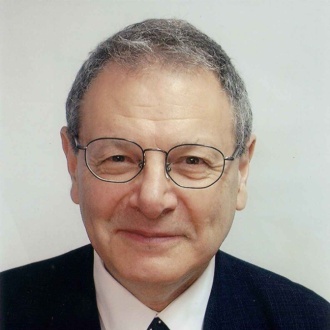Simchat Torah: Why We Rejoice
On Simchat Torah, we rejoice and dance endless horas around the bimah. Why do we rejoice and why do we dance the hora in particular?
The obvious answer is that we rejoice because we read the concluding chapter of the Torah on this day. Concluding a book of the Torah is always a cause for celebration. Yet, this can’t be the entire answer because the name Simchat Torah implies that the Torah itself rejoices. Though the literature about this holiday speaks of rejoicing over completing the final chapter of the Torah, the accepted name of the holiday is Simchat Torah, the joy of the Torah, not Simchat Gomrei Torah—the joy of those who concluded the Torah. So, why do we rejoice and why does the Torah rejoice?
Another question. A common practice at conclusion celebrations is to deliver lectures on the study we had just completed. On Simchat Torah, we don’t offer lectures. Instead, we dance. Why?
All these questions point to a much deeper understanding of Simchat Torah. Indeed, we don’t celebrate merely because we complete the Torah, we complete the Torah because it is a day of celebration.
The Circle
Simchat Torah is the culminating festival of the High Holiday season in general and of the holiday of Sukkot in particular. The Sukkah is a mitzvah that envelops the person completely. There is no other Mitzvah that we can literally walk into. It is true that every Mitzvah issues a spiritual energy field that envelops us, but this energy is not visible to the naked eye. On Sukkot, because we can literally see the Mitzvah envelop our bodies, we become aware of this spiritual energy and can well imagine it enveloping our souls. In other words, the Sukkah becomes a holy circle into which we enter.
On Simchat Torah, the opposite occurs. Instead of us entering a Torah circle, we form the circle into which the Torah enters. We literally dance around the bimah—the Torah reading table). Instead of the Torah creating the atmosphere into which we enter, we create an atmosphere into which the Torah enters.
This is odd. How can we become the atmosphere for the Torah, don’t we need the Torah to set the atmosphere for us?
The King
Let’s answer this question by means of a parable. Suppose you saw a picture of a single person standing in a square. Then the camera pans back and you see that this person is standing amidst a sea of people. What you thought was a picture of one person turns out to be a picture of a thousand people. From a bird’s eye view, the one person on which you were focused fades into anonymity; swallowed up by the larger crowd.
Though you are struck by this sudden change of perspective, something gnaws at you. You can’t quite put your finger on it, but something isn’t right. Slowly you realize what is bothering you. If this was a scene of a thousand people, why did the camera focus on the one person before?
You decide to zoom in again and take a closer look at the person in the middle. You study his attire and realize that he is wearing a crown and majestic robes. Now the penny drops, and everything makes sense. The man in the middle isn’t swallowed up by the thousands of people around him, he is the reason for the gathering. They gathered to honor their king.
Once again, you shifted perspective, but this time, instead of gaining a new perspective, you gained a much deeper understanding of both your previous perspectives.
Let’s unpack this scene a little. The crowds gathered to create an atmosphere for the king. Thus, the crowd sets the atmosphere into which the king enters. But since the king is the reason and purpose of this atmosphere, the truth is that the king creates the atmosphere that the crowd forms. He is the axis of the circle. He is its central purpose. Without him, this gathering would not create a majestic atmosphere. The atmosphere is only majestic because it was formed for the king.
Simchat Torah
We can now return to Simchat Torah and answer all our questions. Throughout the year when we perform Mitzvot, we are not even aware that we generate a spiritual forcefield that envelops us. We are not aware that G-d embraces and enfolds us in the aura of His Mitzvot. We see only and feel only one person—ourselves.
As a result of the deep soul searching and inner examination that we performed from Rosh Hashanah until Yom Kippur, our lens pulls back and we became aware of a larger picture—our relationship with G-d. We realize that we are not the focus of our existence; that we are, in fact, an exceedingly small piece of an exceedingly large picture. The Mitzvot that we performed (symbolized by the Sukkah) is the large picture and we are a very small part of it—enveloped and even lost in its enormity. In simple words, this means that we are humbled and overwhelmed by the enormity of G-d’s love for us and for the depth of the bond that we forge with Him through the Mitzvot.
On Simchat Torah, we take a closer look again at the little person in the center of the circle and realize that the entire circle was formed for us. G-d did not create us so that we could fulfill the Torah’s commandments, in which case the Torah would have been primary, and we by comparative standards would have been an insignificant secondary—faded into anonymity within the larger Sukkah.
On Simchat Torah, our perspective shifts and we realize that the very opposite is true. G-d wanted to have a relationship with us and issued the Torah to give us a portal through which we could connect with Him. We are not secondary; we are the entire purpose. The Torah serves to give us a portal to G-d.
The Answers
- This shift in perspective is a thrilling cause for joy not only for us but for the Torah too. This is why we and the Torah rejoice on this day. We rejoice with the Torah and the Torah rejoices with us. We revel in this revelation and the Torah revels in the cause and purpose that it serves.
- We dance the hora—a circle—to communicate that although we are at the center of the circle (as we were in the Sukkah) we are also its purpose. In other words, we create the atmosphere in which the Torah thrives and through which it fulfills its purpose.
- We don’t offer lectures on the Torah. Instead, we rejoice with the Torah’s joy. The Torah wants to dance to celebrate the Jewish people, but the Torah has no feet, so we form the Torah’s feet.
- It is true that we complete the last chapter of the Torah on this day and this, in and of itself, is a cause for celebration. But this hardly scratches the surface of our joy on Simchat Torah. The truth is that we don’t rejoice only because we completed the Torah. On the contrary, we complete the Torah on this day because it is the day on which the Torah rejoices.[1]
[1] This essay is based on Shulchan Aruch Orach Chayim, Ramo 669:1; Likutei Sichos 2, pp. 434–435; 4, p. 1169; 34, p. 222.
























